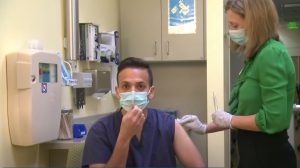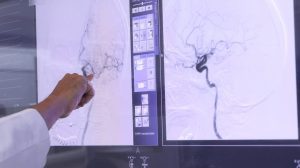NEW YORK (Reuters Health) – Adolescents with chronic pancreatitis can have long-term relief from pain after therapeutic endoscopic retrograde cholangiopancreatography (ERCP), researchers from China say.
The goal of the procedure is to relieve obstructions of the pancreatic or common bile duct via papillotomy and stone extraction or stent insertion, lead author Dr. Zhao-Shen Li and colleagues write in their March 9th online report in The American Journal of Gastroenterology.
In contrast to chronic pancreatitis in adults, which is usually related to alcohol and often produces permanent exocrine impairment, the disease in children is usually linked with reversible biochemical changes and “may have a higher likelihood of uncovering anatomical abnormalities,” the authors add.
Because the long-term benefits of therapeutic ERCP in children and adolescents with chronic pancreatitis are not well defined, Dr. Li and colleagues reviewed 42 of the 46 pediatric cases managed at Changhai Hospital in Shanghai between 1997 and 2009.
Twenty patients were boys. Overall, the mean age at first onset of pancreatic pain was 11.8 years, and the mean age at ERCP was 16 years. Most children (n = 33) had idiopathic pancreatitis; 2 had hereditary conditions and 7 had pancreas divisum. The average follow-up period (first ERCP treatment to last contact) was 61.4 months.
The researchers performed a total of 110 ERCP sessions, with an average of 2.6 per child (range, 1 to 7). The investigators placed 74 stents overall; most patients (n = 21) required just 1 or 2 stents, but 2 required 6 each, and 1 required 5.
The overall post-ERCP complication rate was 17.3% (19 of 110 sessions). Mild and moderate pancreatitis occurred after 17 sessions and mild cholangitis after 2.
Five children required surgery for ERCP-resistant pain. Thirty of the remaining 37 (81.1%) had improvements in pain, including 24 (64.9%) with complete pain relief.
“Therapeutic ERCP can be used efficaciously as an initial management of choice in adolescents with chronic pancreatitis, with relative safety,” the authors conclude.
References:
Am J Gastroenterol 2010.




